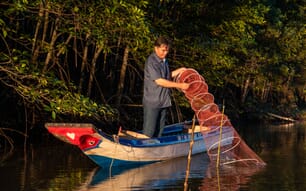The forecast is the eighth seasonal Gulf of Maine algal bloom forecast funded by the US National Oceanic and Atmospheric Administration (NOAA) and issued by scientists from the Woods Hole Oceanographic Institution and North Carolina State University.
A type of harmful algal bloom (HAB) caused by the alga Alexandrium fundyense produces red tides and a toxin that can lead to paralytic shellfish poisoning, which can result in serious or even fatal illness in humans who eat contaminated shellfish.
In 2005, an unusually large event caused $23 million in lost shellfish sales in Massachusetts and Maine.
States in affected areas conduct rigorous monitoring of toxin levels in shellfish and, when necessary, ban harvesting to protect human health.
The seasonal forecast, which is generated by modelling how algal cysts will respond to predicted ocean conditions, is used to guide the state monitoring.
Woods Hole will also maintain three robotic HAB sensors called environmental sample processors (ESPs) at locations along the Maine coast throughout the spring and summer.
This is the first year the Maine Department of Marine Resources (DMR) will provide their direct measurements of shellfish toxicity to researchers for comparison with estimates derived from near-real time ESP data on Alexandrium cells to try to predict toxicity in shellfish.
"We are working with the researchers at Woods Hole to further explore the relationship between the direct shellfish toxicity measurements onshore and the predictions of toxicity from the ESPs located offshore," said Kohl Kanwit, director of the Bureau of Public Health for the Maine DMR.
"The ESPs are not a replacement for state-run programs that monitor naturally occurring marine toxins in shellfish, but they can possibly increase our program efficiency in the future by providing automated data collection that can inform on-the-ground decision making," he added.
"This partnership on the Gulf of Maine seasonal HAB forecast and use of ESPs to detect toxic red tide offshore are examples of NOAA's role in improving ecological forecasting capabilities along our coasts," said Dr Holly Bamford, assistant NOAA administrator for NOAA's National Ocean Service.
"Advance warning of toxic HAB events enables proactive actions to protect coastal economies, making the region more resilient to red tide outbreaks."





